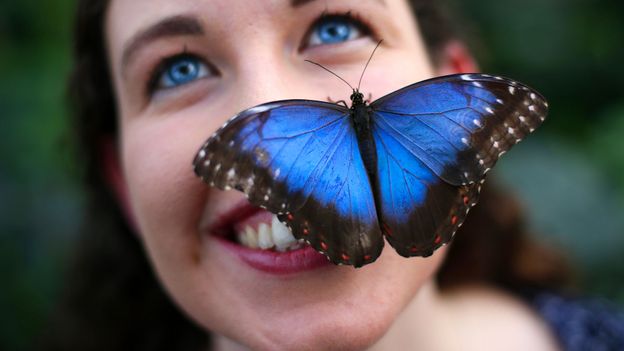Why we need powerful symbols


In the 20th and 21st Centuries, the vanitas connection with butterflies held strong. Inevitably, however, the message has mutated in line with historical conditions. In the 1950s the French artist Jean Dubuffet made art using real butterfly wings which he stuck to the surface of canvases to make colourful designs of abstract patterns. In marked contrast to the careful dissection and mounting of serious butterfly collectors, Dubuffet deliberately ripped their wings off and dispersed them asymmetrically in his compositions. They were despised by critics, who described them in language reminiscent of the recently ended World War Two. They were “massacres” that unmasked the artist’s “useless” and “cruel” attitude to nature. Today, however, they are seen as a key element in the artist’s oeuvre, inspiring future artists to treat butterflies symbolically as harbingers of disaster.
Maybe the most famous contemporary practitioner to use butterflies in their art is Damien Hirst. Also aware of the traditional symbolism of butterflies, Hirst has been using them since the beginning of his career in the early 90s but his culminating works deployed butterflies on an epic scale. I am Become Death, Shatterer of Worlds (2006) is a kaleidoscopic composition which used 2,700 real sets of butterfly wings. They strobe across a 5m-long canvas creating a cinematic and sublime spectacle. Death is disconcertingly electrified into a thing of great beauty.
Butterflies could be an icon of climate change for both scientific and cultural reasons. They are among the planet’s most rare and ethereally beautiful creatures, and they are uniquely attuned to global warming. There is also a shared human cultural understanding of butterflies: common themes link Daoist writing in China in the Warring-States period to a still-life painter in 17th-Century Netherlands, and connect philosophers in ancient Greece to 21st-Century YBA artists.
These themes – of change, resurrection, the soul, and death – were seized upon by British-Nigerian artist Yinka Shonibare in his 2015 Butterfly Kid sculptures. Shonibare’s intention was to address climate change. His figures sprout butterfly wings and are poised as though imminently about to soar into the sky. It is a fantastical vision of escape from an imagined future world obliterated by the human mismanagement of nature. In his work, and others throughout history, the butterfly is a symbol of imperilled nature’s most colourful and beguiling design, offering both a warning signal and a reminder of the audacity of hope.
If you would like to comment on this story or anything else you have seen on BBC Culture, head over to our Facebook page or message us on Twitter.
And if you liked this story, sign up for the weekly bbc.com features newsletter, called The Essential List. A handpicked selection of stories from BBC Future, Culture, Worklife and Travel, delivered to your inbox every Friday.








